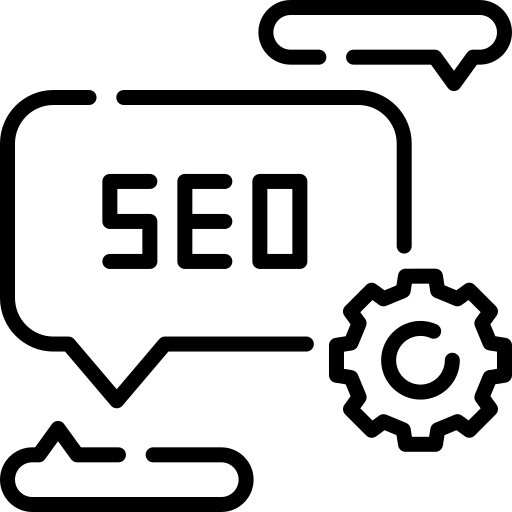
The Importance of Content Refreshing and Updating
Introduction
Website owners and content creators must regularly update their content in the fast-changing digital world.
This is necessary to keep the content relevant and engaging for their audience.
This article discusses the importance of updating your content.
It also provides tips on how to identify content that needs updating. Additionally, it offers advice on how to refresh and enhance your content.
Why Should You Update Old Content?
Improved Search Engine Rankings
One of the key reasons to update old content is to improve your search engine rankings.
Search engines like new and relevant content.
Updating your articles and blog posts regularly shows search engines that your website is active and has current information.
To optimize your content for search engines, it’s important to incorporate the target keyword, “update old content,” and its variations in the headings and throughout the article.
By doing so, you signal to search engines the relevance of your content to the topic.
Enhanced User Experience
Refreshing and updating your content also enhances the user experience.
Outdated content can leave readers feeling frustrated, as they may encounter outdated information or broken links.
By keeping your content up-to-date, you provide value to your readers, ensuring they have access to accurate and relevant information.
To improve the user experience, consider adding visual elements such as images, infographics, and videos to make your content more engaging and easy to digest.
Break long paragraphs into shorter ones and utilize headings, bullet points, and lists to improve scannability.
Increased Organic Traffic
Another benefit of updating old content is the potential to attract increased organic traffic.
When you update your content, search engines may re-crawl and re-index your pages, giving you an opportunity to rank higher in search results.
Additionally, promoting and distributing your refreshed content through social media and email marketing can help drive more traffic to your website.
To maximize organic traffic, it’s important to optimize your refreshed content for relevant keywords, including the target keyword and its variations.
By strategically incorporating these keywords into your content, you increase the likelihood of attracting organic search traffic.

How to Identify Content That Needs Updating
Before you start updating your content, it’s important to identify which pieces of content require refreshing.
Here are two effective strategies for identifying content that needs updating:
Performing Content Audits
A content audit involves systematically reviewing and evaluating your existing content to identify areas for improvement.
To conduct a content audit:
1- Create a spreadsheet to track the performance of your content.
2-Analyze metrics such as page views, time on page, and bounce rates to identify underperforming content.
3- Identify outdated content by reviewing the publication dates and ensuring the information is still accurate and relevant.
4- Prioritize the content that requires updating based on performance metrics and relevance.
Analyzing User Feedback and Metrics
User feedback and metrics provide valuable insights into how your audience interacts with your content.
Consider the following approaches:
1- Monitor comments, social media mentions, and customer inquiries to identify content gaps or outdated information.
2- Analyze metrics such as bounce rates, time on page, and exit rates to assess the effectiveness of your content.
3- Utilize tools like Google Analytics to gain deeper insights into user behavior and identify areas for improvement.
4- You can better understand which content needs updating by combining content audits with user feedback and metrics analysis.

Strategies for Refreshing and Updating Content
After finding what needs to be updated, it’s time to use strategies to improve and optimize your content.
Here are some strategies to consider:
Updating Statistical Data and Examples
One way to refresh your content is by updating statistical data and examples.
Outdated statistics can decrease the credibility of your content.
To keep your content accurate and relevant:
1- Identify reliable and up-to-date sources for statistical data.
2- Replace outdated statistics with the most current ones.
3- Update examples and case studies to reflect recent trends and developments.
By using new data and examples, you can give your readers accurate information and show that you are up-to-date in your field.
Adding New Information and Insights
To make your content more valuable and engaging, consider adding new information and insights.
Here’s how you can do it:
1- Conduct additional research to gather new information related to your topic.
2- Incorporate the new findings into your existing content, expanding on key points or introducing new perspectives.
3- Provide insights and analysis based on the latest industry trends or research.
By adding new information and insights, you demonstrate your expertise and provide readers with fresh perspectives on the topic.
Improving Visual Elements
Visual elements play a crucial role in enhancing the readability and engagement of your content.
Consider the following tips:
1- Review the existing images, infographics, and videos in your content.
2- Replace outdated or low-quality visuals with high-resolution and relevant ones.
3- Utilize visual elements strategically to support and enhance your written content.
Make your updated content more visually appealing and easier to comprehend.
This will help to capture the attention of readers.
By improving the appearance of your content, you can make it more engaging for your audience.

Best Practices for Content Updating
When refreshing and updating your content, it’s important to follow best practices to ensure a seamless and effective process.
Here are some best practices to consider:
Maintaining Consistency with Branding and Messaging
While updating your content, it’s crucial to maintain consistency with your branding and messaging.
This helps to preserve your brand identity and ensure a cohesive user experience.
Here are some tips:
1- Review your brand guidelines and tone of voice to ensure consistency.
2- Maintain a consistent writing style and messaging across all updated content.
3- Update visuals and design elements to align with your brand identity.
By maintaining consistency, you reinforce your brand image and build trust with your audience.
Optimizing for SEO
To maximize the visibility of your updated content in search engine results, it’s important to optimize it for SEO.
Consider the following best practices:
1- Include the target keyword, “update old content,” and its variations naturally throughout the article, including in the h1, h2, and h3 tags.
2- Optimize meta tags, including the title tag and meta description, by incorporating the target keyword in a compelling and concise manner.
3- Utilize SEO plugins or tools to ensure proper optimization, such as optimizing URL structures and internal linking.
By optimizing your refreshed content for SEO, you increase the chances of ranking higher in search engine results and attracting organic traffic.
Monitoring and Analyzing Performance
After updating your content, it’s essential to monitor and analyze its performance.
This allows you to assess the effectiveness of your updates and make further improvements if necessary.
Consider the following steps:
1- Track relevant metrics such as page views, engagement, and conversions for the updated content.
2- Analyze user feedback and comments to gain insights into how the updated content is resonating with your audience.
3- Make data-driven decisions based on the performance analysis to further refine and optimize your refreshed content.
By continuously monitoring and analyzing performance, you can ensure that your content remains relevant and effective over time.

Conclusion
Refreshing and updating your old content is an essential practice for maintaining the relevance and value of your website.
By implementing the strategies discussed in this article, you can improve search engine rankings, enhance user experience, and attract increased organic traffic.
Remember to incorporate the target keyword, “update old content,” and its variations naturally throughout the article to optimize it for search engines.
By consistently refreshing and updating your content, you can stay ahead of the competition and provide valuable information to your audience.
Now that you have a comprehensive understanding of the importance of content refreshing and updating, it’s time to start applying these strategies to your own content marketing efforts.
Embrace the opportunity to provide your audience with fresh and valuable information, and watch as your website’s visibility and engagement soar.








